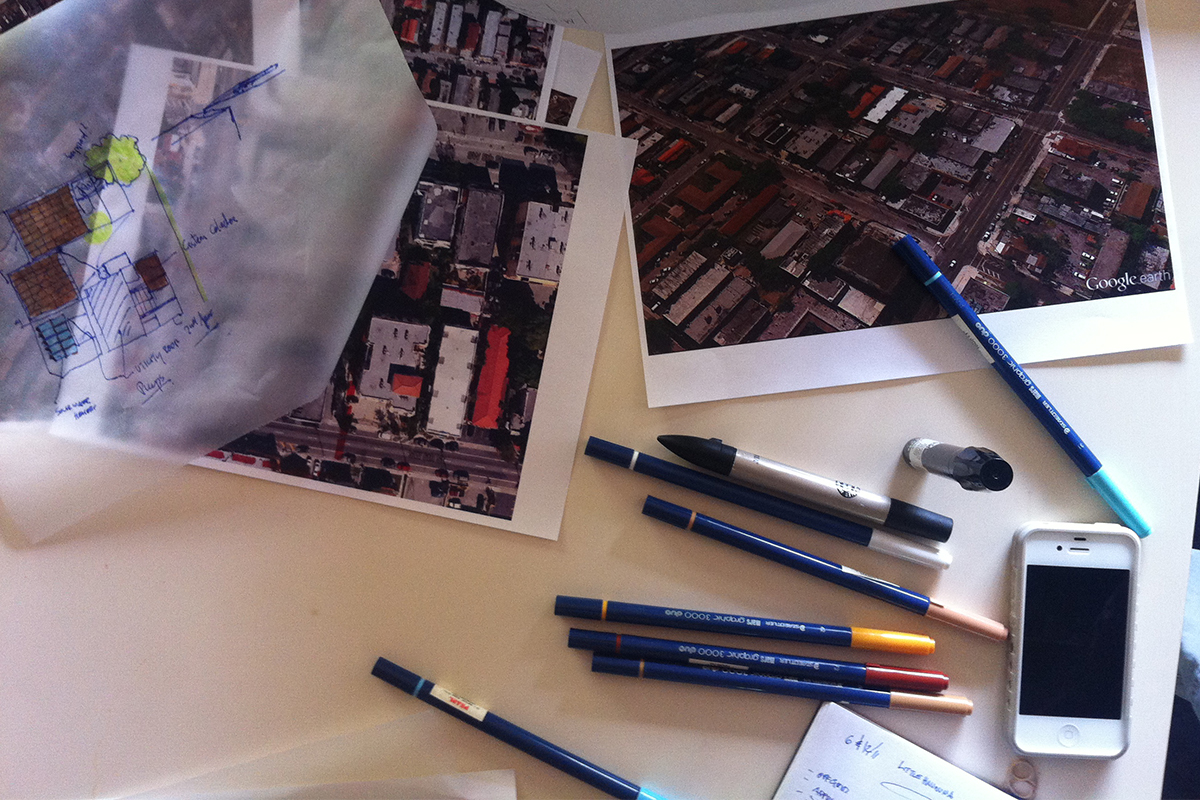VISUALIZING CLIMATE CHANGE THROUGH PARTICIPATORY ART
FUNDER: Kresge Foundation
CLIENT: HighWaterLine
LOCATION: City of Miami and City of Miami Beach
STATUS: Complete
DATE: June 2013 - November 2013
Video produced by Eve Mosher.
CHALLENGE
Climate change and sea level rise have been highly political, polarizing subjects in many places, and South Florida is no exception. Despite mounting evidence from both scientific sources and real world experience, a lack of community engagement and action from elected leaders has compounded our region’s vulnerability to the impacts of climate change. Scientific jargon, complex concepts, and doom and gloom scenarios add yet more levels of difficulty to existing challenges.
While awareness and understanding of Miami’s extreme vulnerability has slowly spread, there continues to be a significant need for engagement and, more importantly, action.
SOLUTION
HighWaterLine | Miami used large-scale participatory art to drive awareness and build genuine engagement on the issue of sea level rise and resilience. The project started by focusing on outreach and storytelling at all scales, from informal neighborhood gatherings to large community dialogues with municipal leaders. The project team designed multiple, multilingual involvement opportunities depending on participants’ level of interest, understanding, and comfort. The HighWaterLine | Miami team also transformed scientific data* into clear and compelling visual images about the effects of climate change in Miami.
The concept behind HighWaterLine is simple. The project starts with research into the projected sea level rise impacts on a specific geography. In places like Miami and Miami Beach, where flooding from sea level rise is estimated to reach 6 feet as early as 2040, the most current projections were used to create a map delineating existing streets, parks, and public spaces that could be underwater. The map was then used to create a route. Using a field chalker filled with blue tinted powdered chalk, groups of residents and stakeholders came together to mark (ie, chalk) the 6 foot sea level rise lines throughout both cities.
Significant outreach in the months leading up to the chalking event helped participants feel confident and prepared for the inevitable questions, impromptu interviews, and informal dialogues arising out of this attention-getting exercise.
OUR ROLE
Urban Impact Lab was contracted by Hi.ghWaterLine’s founding artist Eve Mosher and community organizer Heidi Quante, to co-lead the project in Miami. The Urban Impact Lab team facilitated all community workshops and discussions as well as organized neighborhood-specific planning sessions in multiple languages. The Urban Impact Lab team helped the HighWaterLine founders navigate and connect with Miami’s intricate network of residents, community organizations, and municipal and county agencies. Months of outreach, dialogue and participation culminated in a 26-mile, participatory art project coordinated by the Urban Impact Lab team.
RESULTS & IMPACT
Facilitation of over 20 multilingual, community convenings, storytelling workshops and climate-solutions sessions reaching more than 500 local residents.
Completion of a massive, fully coordinated 26-mile participatory art project involving over 50 residents to visualize how sea level rise will impact local coastal communities.
Incorporation of climate change as a key issue within local community organizations that had previously not considered climate change as part of their mission or focus areas.
Development of additional HighWaterLine installations throughout the US and in Europe based on the project’s success in Miami.
The process of implementing HighWaterLine | Miami was ultimately the project’s most important contribution, because it focused so heavily on sharing knowledge and creating numerous new connections among residents. While the act of chalking a 26-mile long blue line throughout Miami Beach and Miami was certainly stunning, the lead-up effort helped residents and organizations have breakthroughs and reach new levels of understanding of the vulnerabilities and challenges they face. While these realizations were initially challenging, the project team’s focus on community building and solutions-oriented discussions catalyzed action. Powerful local organizations such as Catalyst Miami (link), were driven to incorporate climate change as a key local issue aligned with their mission.
HighWaterLine | Miami received considerable national and local press coverage, including The Weather Channel, Grist, BBC and NPR.
INSIGHTS
Participating in HighWaterLine really opened my eyes to how vulnerable Miami is, but it also helped me see how resilient our diverse communities already are. Many of our residents have to come to this city seeking a better life. They have had to leave everything behind and find a way to thrive. HighWaterLine not only impacted me personally, but it also inspired our organization to address climate change as a social justice issue and incorporate it as one of our key programs.
-Kamalah Fletcher, HighWaterLine participant and previous Director of Community Engagement at Catalyst Miami.
Doing the chalking and seeing the mark in the areas that you live and areas that work in, and areas that you play in, is really powerful for anyone. Even if you spend all day looking at the maps and looking at the inundation on you know, projections. It still is really powerful to be pushing the cart [chalker] and looking at it compared to where you live and where you wanted to stay – where you want to stay and hope to still be able to live.
It’s not us versus them. It’s all of us, and we’re all in it and we all want to stay here.
-Marisa Prieto, HighWaterLine participant
Learn more about other HighWaterLine projects: http://highwaterline.org/
*HighWaterLine | Miami used the scientific data provided by Climate Central to create the public performance art piece.
Interested in creatively engaging your community?







